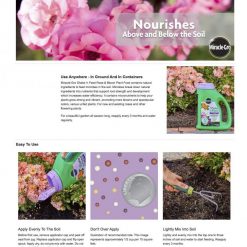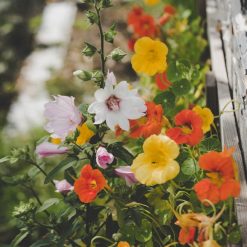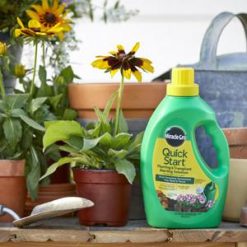There has been a word drifting around the greenhouse lately, and it’s “acclimatizing”. What does that mean and how does it benefit your plants especially at transplanting time? Plus, when it does come time to transplant your annuals, perennials, trees and shrubs, what is the best way to go about it? We’ll talk about water, fertilizer, and more this week on the Helpful Gardeners Podcast!
Acclimatizing our plants
A way to ease our plants out of a controlled environment and into the garden. Can you imagine leaving your sunny destination vacation and coming back home to -10C and you’re in shorts and a tropical shirt? Your body will feel shock! Plants have been growing in ideal soil, light, and temperature conditions up until now, so it’s advantageous to start exposing them to slight changes in conditions.
- Temperature | Bring plants outside for a couple hours when it’s above a certain daytime temperature.
- Bedding plants / Annuals – wait until daytime temperatures reach double digits.
- Perennials / Trees / Shrubs – More hardy and can go outside when temperature rise above +5C
- Sun | Sun is a good thing as long as it’s not +30 on tender seedlings! Too much of a good thing. On those teen temperature days, let them sit for a few hours!
- Wind | Wind helps strengthen stems on your plant. Inside, you can use a fan to simulate the kind of wind your plants will receive outside.
- Bedding plants / Annuals – A big gust of wind is enough to topple a seedling, especially a tomato or pepper.
- Perennials / Trees / Shrubs – A bit hardier, just watch for a chilly wind.
TIP: Don’t forget about your plants! They don’t need to spend all day outside, but a few hours will suffice. Set a timer on your phone just in case. If you forget them, they run the risk of cold exposure which may cause irreversible damage to cell structures throughout the plant.
Transplanting
Shoutout to Mary this week who sent us an email about growing cucumbers from seed! Transplanting can be scary because your plants are going through shock and they’ll either take or perish back to the earth. So, what can you do to ensure the best transition?
Proper Maintenance Habits
Sun Exposure: Prior to planting, review your seed packet to determine how much sunlight your specific variety should receive. High production plants, like cucumber, tomato and Sun Flower require full sun (6+ hours).
Water:
- Perennials, Trees, and shrubs | Give your new transplant water every day for the first two weeks. If you’re using a transplant fertilizer (info below), then only incorporate that as per manufacturer specifications. After two weeks, taper off to every few days and then down to monitoring throughout the season.
- Tender annuals will require water everyday for the first couple weeks and then as needed which could mean a couple times a day when we reach hot temperatures.
Transplant Fertilizer
A transplant fertilizer will help your plant establish a healthy root system as it gets used to its new environment. If you are transplanting a bigger plant, like a tree or shrub, use a slow release transplant fertilizer.
When do I give up on a new transplant?
- Annuals – After two weeks, if the plant is suffering, consider starting fresh from either direct sow seeding or an established plant from a local garden centre.
- Perennials, Trees and Shrubs – Let them sit for a bit. Continue watering and fertilizing. If leaves drop and the plant goes into dormancy, discontinue fertilizing but maintain watering schedule. It may come back the following year! If it doesn’t come back, then it may be time to start over.
*************************
CONNECT WITH US
Thank you so much for supporting our podcast and for making the world a more planty place. Please subscribe, leave a rating or review and listen in for new gardening discussions every week!
Subscribe to our show on Spotify, Apple, and Google
Leave an anonymous voicemail and be featured on the show!
Instagram / Facebook
Email us info@goldenacre.ca (SUBJECT: PODCAST)








